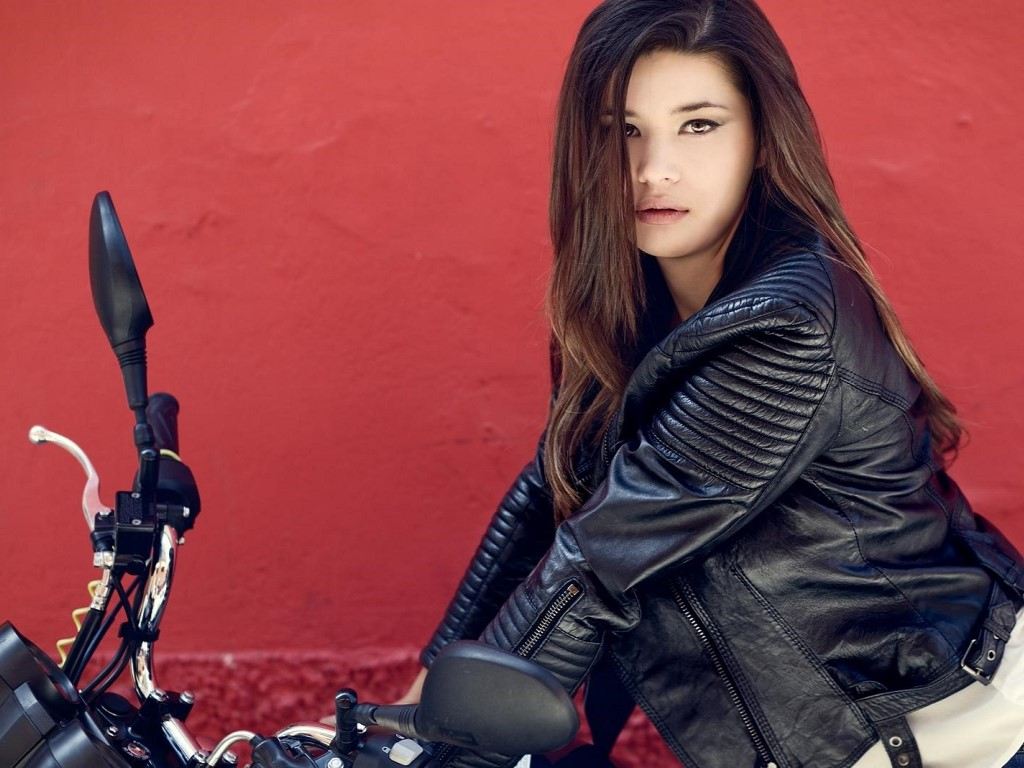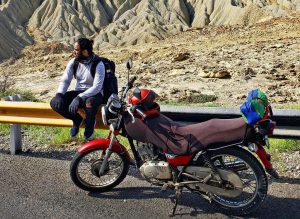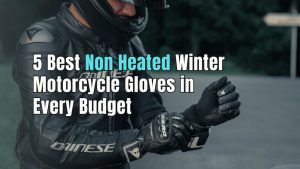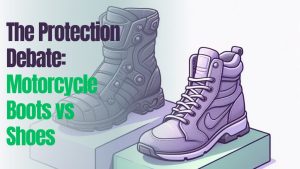The sickening crunch of metal on pavement still rings in my ears. My Harley lies twisted on its side, the bike’s softail meeting unforgiving asphalt. I tried to move and had a sigh of relief as my spine remained intact, protected by the safety features in my motorcycle jacket.
You may think a jacket is flimsy against the violent forces of a crash, but motorcycle jackets are carefully engineered with armor, padding and impact-absorbing materials to shield your back, spine, and vital organs from injury.
Are you properly protected? Read on to find out what really determines a jacket’s ability to safeguard your most vulnerable regions in a collision.
Disclaimer: This article is for informational purposes only. It is important to consult professional advice and thoroughly research products before making a purchase. Always follow the manufacturer’s guidelines and recommendations for proper fitment. The information provided here should be used as a guideline, and individual preferences and needs may vary.
Do Motorcycle Jackets Protect Your Back and Spine in a Crash?
A jacket alone cannot protect you during an accident. But some motorcycle jackets come with various safety features and you can add some aftermarket safety accessories to ensure the maximum protection.
1. Armor and Materials
i. Types of Protective Materials
In the quest for enhanced safety, motorcycle jacket manufacturers have turned to advanced materials designed to withstand the forces of impact. Let’s take a closer look at some of the protective materials commonly used in modern motorcycle jackets:
Kevlar: It’s one of the most common protective materials used in motorcycle jackets due to its incredibly high tensile strength. Kevlar threads and layers are woven into impact zones of the jacket to catch abrasive forces and deflect hits away from the rider’s body.
Compared to other options, Kevlar offers excellent impact resistance and durability without adding much bulk or weight.
Dyneema: It’s another popular choice, featuring ultra high molecular weight polyethylene fibers that provide cut and abrasion resistance as good as or better than Kevlar.
Dyneema fabric is extremely lightweight and flexible while still maintaining impressive tensile strength. This makes it a premier option for under-armor layers and impact panels in motorcycle jackets.
Cordura: Cordura is a nylon fabric blend engineered for durability. While it does not offer the same level of impact resistance as Kevlar or Dyneema, Cordura is relatively affordable and resistant to tears, scuffs and abrasions. Many jackets use Cordura in non-critical areas like the sleeves, back panel and collar.
Each of these materials helps decelerate impact forces and disperse them to reduce stress on the wearer’s back, spine and ribcage.
YOU MAY LIKE: How Do I Choose a Motorcycle Jacket for Long Distance Riding?
ii. Impact-absorbing armor
In addition to impact-resistant fabrics, motorcycle jackets contain various forms of armor to shield vulnerable body parts during crashes.
Hard shell back protectors: They are integrated into the spine area of most motorcycle jackets. Made of durable plastics like polycarbonate or ABS, back protectors aim to minimize stress and deformation of the spine by absorbing impacts and distributing forces across a wider area. This is especially important for riders who may experience a direct hit on their back in a collision.
Shoulder and elbow armors: They are made of either hard or flexible plastic shells. This armor absorbs impact forces that would otherwise damage delicate shoulder and elbow joints.
In a slide, the weight of the rider’s body plus the motorcycle itself can place extreme stress on shoulders and elbows, so armor in these locations can help prevent dislocations, fractures and abrasions.
Integrated armor inserts designed for compatibility with CE-certified back protectors should meet or exceed the requirements of the EN 1621-2 impact test standard, ensuring impact absorption properties capable of reducing injuries.
iii. Back protectors
Back protectors in motorcycle jackets come in a few different configurations to absorb impact and reduce stress on the spine.
Flexible back protectors utilize layers of foam, air cushions, or honeycomb-like structures to absorb impacts without restricting movement. While they offer less direct impact protection, flexible protectors are comfortable for daily riding and more breathable.
Semi-rigid protectors combine a flexible outer layer with a plastic shell insert for improved impact absorption. They provide more spine protection than flexible options yet still allow for a decent range of motion. Such protectors are suitable for most types of recreational riding.
Rigid back protectors have a solid plastic shell that braces against the full force of an impact, distributing that energy away from the spine. They offer the highest level of protection but are bulky and least comfortable. Rigid protectors are best for heavy-duty use cases like racing and stunt riding.
Air cushions contain compressed air compartments that expand upon impact to absorb shock. While not rigid like plastic shells, air cushions better withstand repeated impacts compared to foam layers alone. They work best as part of a semi-rigid or rigid back protector system.
Flexible options are suited for daily riding while rigid protectors perform best under heavy impacts during racing or stunting. The right configuration depends on an individual rider’s needs and use cases. Overall, any back protector, when used with a well-designed motorcycle jacket, can dramatically reduce the chance of serious spinal injuries during a crash.
iv. Chest protection
The chest is another key impact zone that benefits from additional padding and armor in motorcycle jackets.
Hard shell chest protectors are inserted into pockets over the sternum and ribcage. Made of durable plastic, they brace against impact forces and distribute them across a broader area. This helps minimize the risk of broken ribs, clavicle fractures and sternum injuries that commonly occur in crashes.
Many jackets also incorporate thick foam or gel chest pads without a rigid plastic shell. While they offer less direct impact protection compared to hard shells, chest pads still provide some cushioning to reduce bruising and swelling of the ribs and breastbone.
Both chest protectors and pads can significantly limit chest deformation during impact, which is one of the main causes of rib fractures and flail chest injuries in motorcycle collisions. By absorbing impact forces and keeping the ribcage more rigid, these protective inserts can potentially save riders from months of pain and recovery from broken ribs.
For maximum chest protection, look for a jacket that combines a CE-certified hard shell chest protector with supplemental foam padding across the pectoral and upper abdominal regions. Additional padding on the sides can also help cushion impact to the floating ribs.
YOU MAY LIKE: Are Motorcycle Boots Necessary? 5 Reasons to Say Yes
v. Additional padding
In addition to impact-resistant materials and armor, many motorcycle jackets feature extra padding in critical body areas to provide additional cushioning and impact protection.
A common location is the kidney region on either side of the lower spine. Extra padding here can help absorb blows that might otherwise damage the kidneys or cause back injuries. Look for jackets with removable kidney pads that fit securely over the lumbar region.
Additional padding around the entire spine column is also important. This includes the neck area, where whiplash injuries are common in motorcycle crashes. Additional layers of cushioning material along the length of the spine can provide that extra measure of protection for the spinal cord and vertebrae.
Some jackets even have padded shoulder yokes that wrap around the upper back and connect across the shoulder blades. This reinforced yoke design helps distribute impact forces across a wider area of the upper body in a collision.
2. Proper Fit
Some tips for ensuring a proper-fitting motorcycle jacket:
Shoulders: The shoulders and upper sleeves should be snug but not restrictive. Wiggle your arms around to ensure full range of motion. The shoulders should lie flat against your body when seated on the motorcycle.
Back: The back length should allow you to comfortably bend forward. Check that armor inserts in the shoulder blades and spine lie flat and smooth.
Sizing: Try on the jacket in the riding position to confirm proper sizing. Some riders may need to order a size up from their street clothing size for a comfortable motorcycle fit.
Adjustability: Look for jackets with adjustment straps at the waist, wrists and neck. This ensures you can fine-tune the fit for a custom feel that keeps armor in the right position.
Closure: Two-way zippers and snap closures that meet in the center help achieve a secure and symmetrical closure. Avoid one-sided zippers that may cause twisting.
Removable armor: Check that armor inserts – especially back and chest protectors – are removable for easy washing and replacement. This extends the life of the jacket.
An ill-fitting jacket increases the chances of injury since protective materials and armor may shift out of place in a crash. So, take the time to try on jackets in the riding position and adjust for a custom “second skin” feel.
3. Certification and Ratings
These industry standards provide valuable insights into the level of impact protection a jacket can provide.
i. CE certification
CE certification ensures that a motorcycle jacket meets certain safety standards established by the European Union. Some key points about CE certification:
CE stands for “Conformité Européenne,” French for “European Conformity.” It indicates that a product has met EU health, safety and environmental protection requirements.
CE certification for motorcycle jackets requires impact testing according to the EN 13595 standard. This tests the jacket’s impact absorption properties under controlled lab conditions.
Only jackets that pass EN 13595 testing, simulating impacts up to 20 kilojoules, are allowed to be CE certified and sold in the European market. This ensures a minimum standard of impact protection.
CE certification also requires that armor inserts like back protectors meet the EN 1621 standard for impact performance. This guarantees a baseline level of shock absorption from the armor.
While CE certification is focused on the EU market, it indicates a high standard of impact testing, quality control and impact performance that benefits riders worldwide.
ii. Impact ratings
EN 1621 is a European impact test standard for protective motorcycle clothing, including jackets. There are two levels within the standard:
EN 1621-1: This test simulates an impact at 10 joules, equivalent to a fall from 1-2 meters. Jackets that pass this level offer basic impact protection.
EN 1621-2: This more stringent test simulates an impact of 20 joules, equivalent to a fall from 4-5 meters. Passing this level indicates significantly better impact absorption capabilities.
Higher EN 1621 ratings generally indicate better impact protection, with EN 1621-2 certified jackets providing the most force dampening and shock absorption. Features that help attain EN 1621-2 certification include:
- Sturdier back protectors, often with a hard plastic shell instead of just foam
- Denser, multi-layer shoulder and elbow armor
- More impact resistant materials like Kevlar or Dyneema in critical zones
- Additional foam padding in high impact areas
Given that real world motorcycle crashes can generate impact forces far exceeding 20 joules, riders should look for jackets certified to the EN 1621-2 level for maximum impact protection potential. EN 1621-1 certified jackets still offer some benefits but may not protect as well during high-energy impacts.
4. Impact Zones
Here are the key impact zones during motorcycle crashes and why extra padding and armor in these zones is important:
Shoulders: The shoulders often make first contact during a slide, placing huge loads on shoulder joints and risking dislocations. Look for jackets with robust shoulder armor and padding to help absorb impacts.
Arms: Arms stretched out to brace for impact absorb a lot of force and friction, risking abrasions and fractures. Elbow, forearm and wrist armor can help protect vulnerable limbs.
Back: Even a moderate rear impact can cause serious spine injuries without protection. A robust back protector and impact-absorbing materials across the back panel are critical.
Spine: The spinal column is susceptible to fractures, disc injuries from collisions. Flexible and rigid back protectors can help shield the spine from serious impacts.
Chest: Ribs are easily broken on impact, and flail chest injuries are common. Chest protectors and thick foam padding around the chest and sides can absorb impact forces and help prevent severe chest injuries.
YOU MAY LIKE: 6 Reasons to Wear Armored Pants When Riding Motorcycles
5. Style vs. Function
Here are our recommendations for balancing style and function in a motorcycle jacket:
Prioritize function first. The primary purpose of a motorcycle jacket is to protect you in a crash, so comfort, fit and impact protection should be more important than aesthetics.
However, style is still important for enjoyment and compliance. Aim for a jacket that looks reasonably stylish while fulfilling its protective role.
Consider a basic black jacket. While simple, black is versatile and timeless, allowing the functional elements to stand out over flashy styling.
Focus on the fit. A properly fitted jacket that lies flat and smooth will typically look better than an ill-fitting one, regardless of style.
Opt for subtle armor. Low-profile armor inserts and protective panels blend in better with most designs. Avoid obvious, bulky armor if possible.
Check multiple brands. Functional motorcycle brands and up-and-coming companies often have more stylish options alongside the basics.
Consider customization. Some riders find a more functional-looking jacket and then add patches, stripes or other accessories for a personalized touch.
As a compromise, prioritize function for areas that directly protect your spine and vital organs. Search for style elsewhere in the jacket like on sleeves, neck closure and exterior pockets.
Final Words
When crafted with care and worn properly, a well-designed motorcycle jacket can make an immense difference in protecting your back, spine and chest in the event of a crash. Impact-resistant materials, strategic padding and intelligently placed armor work together to shield your most vulnerable regions from harmful forces and potentially save you from serious, life-altering injuries.

FAQs about Motorcycle Jacket’s Protection of Back and Spine in a Crash
How effective are motorcycle jackets at protecting my spine?
When designed properly with rigid back protectors, padding and impact-resistant materials, motorcycle jackets can be extremely effective at absorbing crash forces and shielding your spine from injury. However, fit and condition of the jacket also impact its protective capabilities.
What parts of my spine does a motorcycle jacket protect?
Motorcycle jackets with back protectors primarily aim to shield your lower spine (lumbar region) and mid spine (thoracic region) where fractures and herniated discs are most common in crashes. Some higher-end jackets also have padding or armor for your upper spine (cervical region).
Can a motorcycle jacket prevent broken ribs in a crash?
Yes! Padding, protective foams and rigid chest protectors built into motorcycle jackets can absorb impact forces and help keep your ribcage stable during a crash. This significantly reduces the likelihood of one or more ribs breaking or becoming dislocated from your breastbone.
How much force can a motorcycle jacket back protector withstand?
Back protectors designed to the EN 1621-2 impact standard have been tested to withstand forces up to 20 kilojoules, equivalent to a fall from around 5 meters. However, real-world crashes can generate impact forces much greater than this. Higher impact ratings offer increased protection potential.
Can armored vests provide better back and spine protection?
While armored vests provide substantial protection, motorcycle jackets with back protectors and impact-resistant materials are still recommended due to their design focused around mobility and comfort while riding. Armored vests are best as an extra layer over a quality motorcycle jacket.
Is motorcycle spine protection needed for short, low-speed rides?
Even low-speed crashes or falls from a stopped motorcycle can cause serious spinal injuries. So back protection is recommended even for short, slow rides. Moreover, low-speed crashes are the most common type of motorcycle accidents.
Do heated liner vests impact protection capabilities?
Heated liners do not impact protection much as long as the hard armor, padding and impact zones remain intact. Many heated vests integrate into the armor areas, drawing power from battery packs concealed in pocket areas away from impact zones.
What if my jacket is too tight? Will it still protect my spine?
A slightly tighter-than-comfortable fit can still offer protection as long as armor inserts sit flat and padding does not bunch up. However, extreme tightness that restricts body movement or prevents a proper protective closure can compromise safety. Opt for a size up if in doubt.
Do textile jackets protect as well as leather?
Many high-end textile jackets offer equal or better spine protection due to advanced materials like Kevlar and Dyneema plus CE-certified polyethylene back protectors. The main trade off is abrasion resistance – leather is tougher and self-healing, while textile laminates can tear more easily.
Does a damaged back protector still provide some protection?
Minor nicks or scuffs likely do not impact a back protector’s performance. However, once deep gouges, major cracks or broken clips hold it in place form, the protector should be replaced to ensure it can still absorb impact forces as designed.
Will the highest impact rated jacket guarantee no spine injury?
Even the best spine protection available today cannot guarantee no injury in a high-speed crash. Many factors determine injury severity. However, an EN 1621-2 rated jacket with CE-certified armor significantly reduces the chances of spine fractures and herniations compared to no protective gear.




